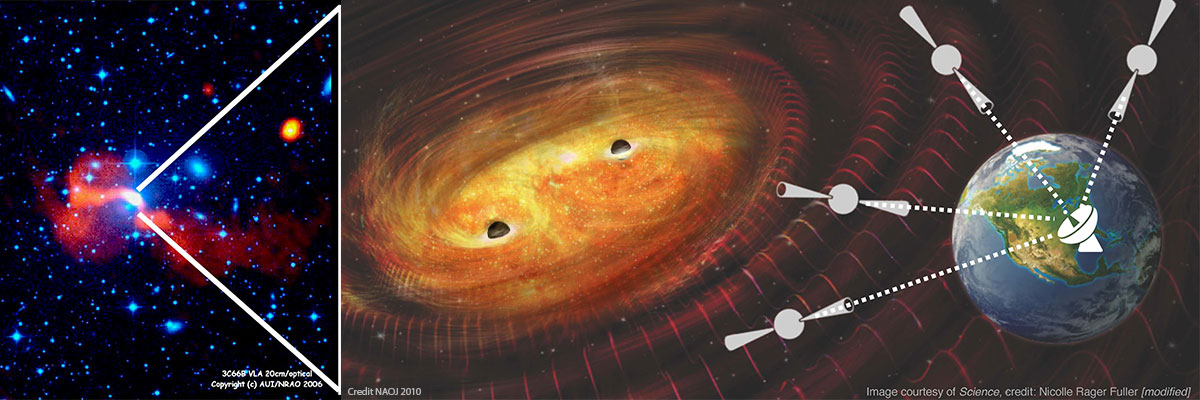3C 66B

Figure Credits: Composite; Caitlin Witt. Components; AUI/NRAO, NAOJ, Nicole Fuller/Science
Multimessenger Gravitational-wave Searches with Pulsar Timing Arrays: Application to 3C 66B Using the NANOGrav 11-year Data Set
Pulsar timing arrays are sensitive to a few types of gravitational waves. Two of the most common are:
- Continuous waves from individual supermassive black hole binaries
- The stochastic gravitational wave background from the combined signal of all of the supermassive black hole binaries in the universe.
Searching for gravitational waves with pulsars is a difficult task, and as we continue to add observations, it won’t get any easier. Searching for continuous gravitational waves is particularly difficult, due to the large range of frequencies and sky locations where we could potentially find a signal.
To solve this problem, in this work, we use a multimessenger approach to search for a particular supermassive black hole binary candidate, 3C 66B. By “targeting” this particular source, we can remove some parameters from our search, and in return, set a lower limit on the mass of 3C 66B than ever before.
Finally, we explore the conditions necessary to implement this “targeted” search method. We find that even in cases where the gravitational wave frequency of a candidate is not well measured, the array remains nearly as sensitive as long as we are targeting the location of a source.
However, there are many supermassive black hole binary candidates that have not yet been searched for by pulsar timing arrays. This work proves that the array is ready to teach us about these binaries, even if we cannot detect gravitational waves from them yet. If you’re interested in applying these techniques to your favorite binary, it’s time! Feel free to utilize the tutorial on the method, or reach out with any questions.
For more information, check out the NANOGrav article about the project, or read the full published paper.
